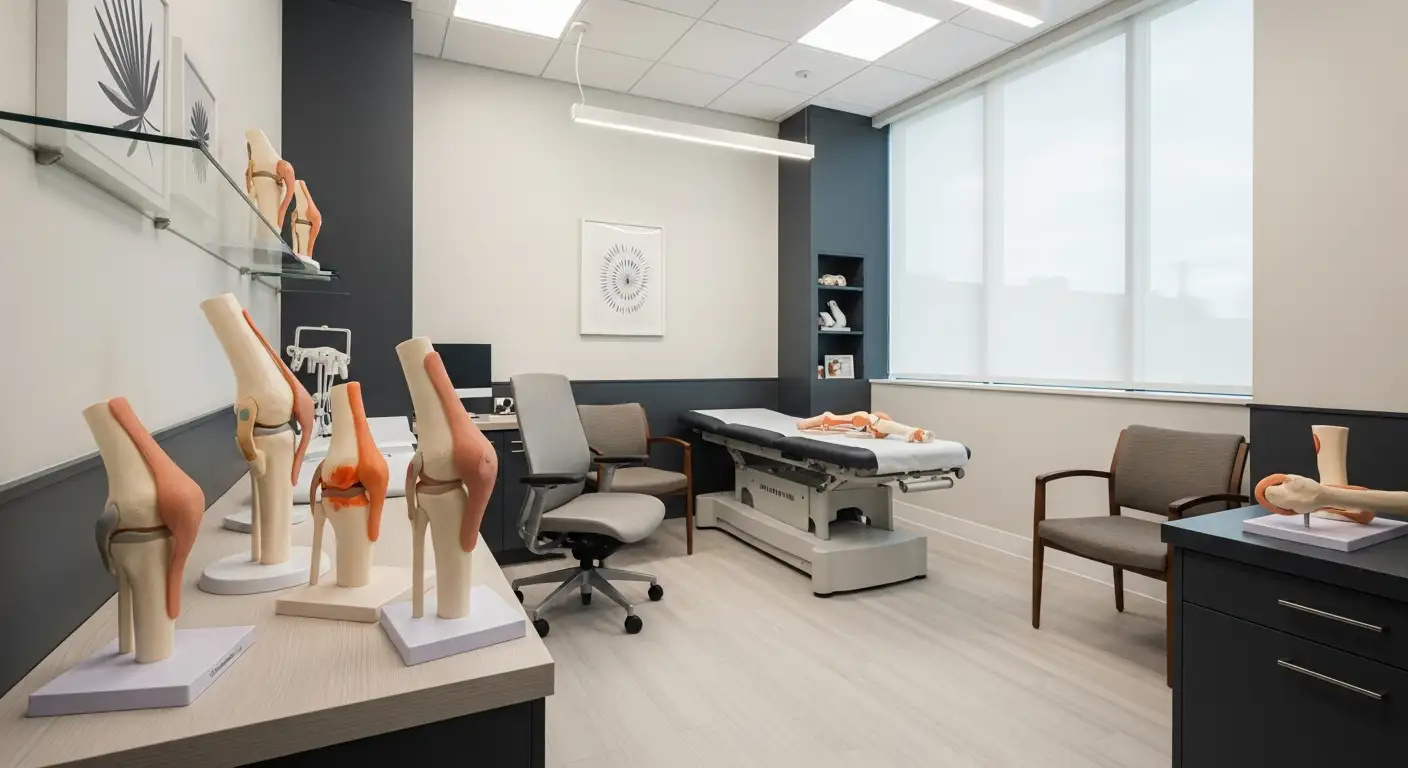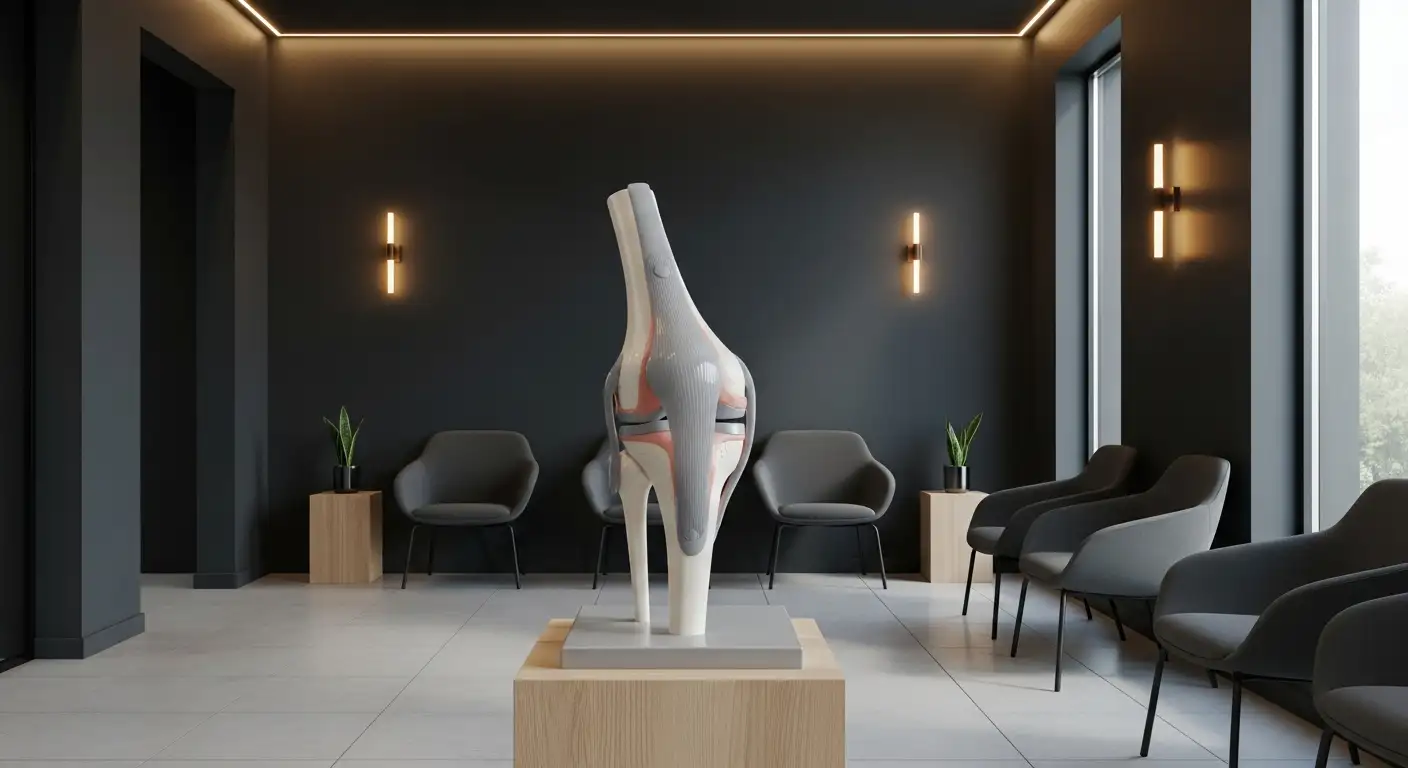Why Knee Pain Intensifies on Stairs
Knee pain during stair climbing is a common complaint that can significantly affect mobility and quality of life. Activities like walking up or down stairs put amplified pressure—up to four times body weight—on the knee joints, often revealing underlying conditions such as osteoarthritis or patellofemoral pain syndrome (PFPS). This article explores the causes, symptoms, and comprehensive treatment options for knee pain related to stair navigation, emphasizing the importance of early management and tailored therapies to restore function and reduce discomfort.
The Anatomy and Mechanics Behind Knee Pain on Stairs
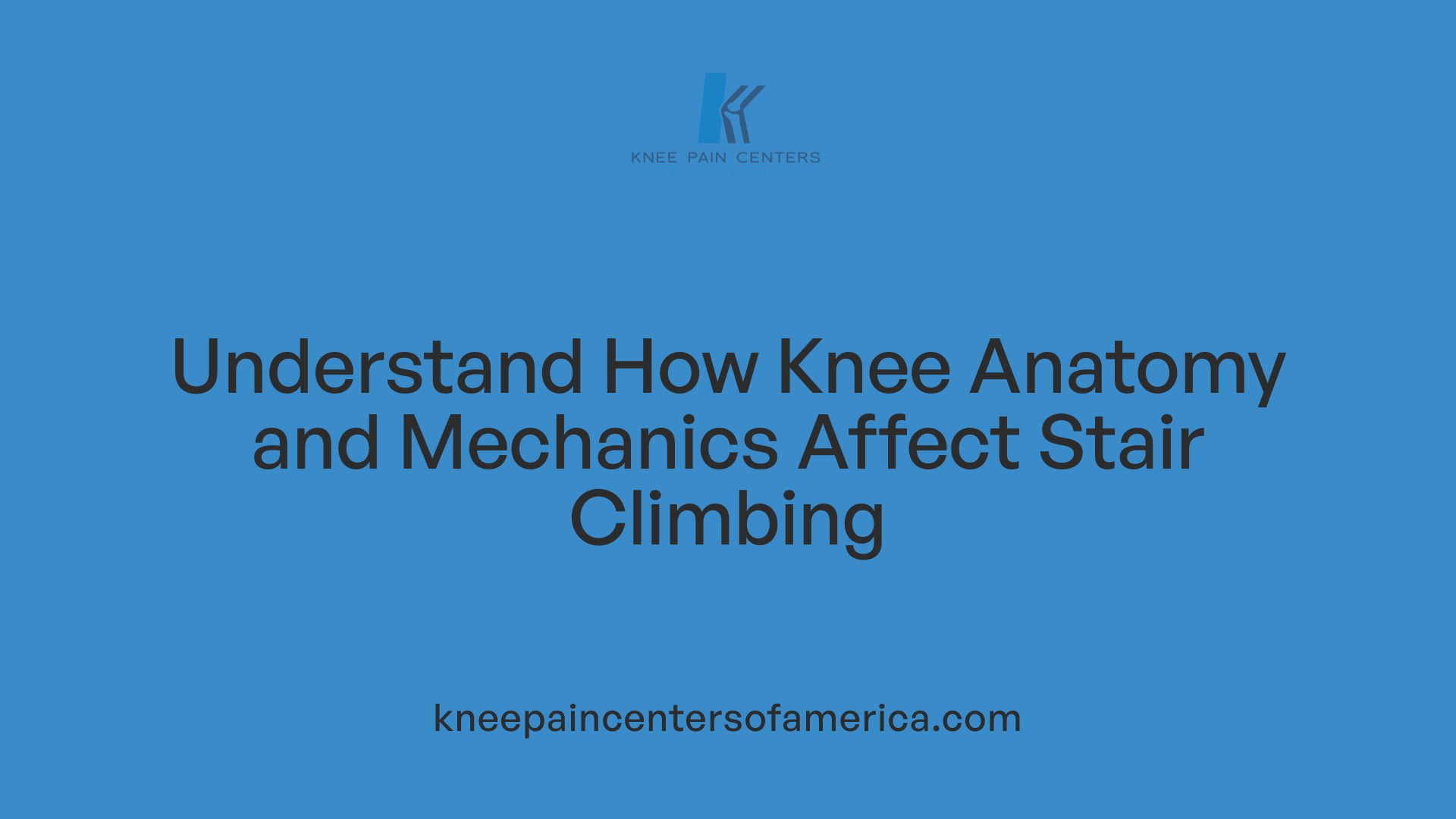
Basic knee anatomy and function
The knee is a complex joint comprised of three bones: the femur (thigh bone), tibia (shin bone), and patella (kneecap). These bones are cushioned by articular cartilage and two crescent-shaped menisci that absorb shock and help distribute weight. Surrounding the joint are ligaments that provide stability and tendons that connect muscles to bones, coordinating movement.
Biomechanical stresses during stair climbing
Climbing stairs subjects the knee to tremendous biomechanical stress—up to four times the body weight per step. Each ascent requires the knee to support and stabilize the entire body as it lifts from one level to the next. This repetitive high load increases pressure across the joint surfaces, especially stressing the cartilage and menisci.
Role of muscles and ligaments in knee stability
Muscles around the knee, particularly the quadriceps, hamstrings, and hip stabilizers, are crucial for maintaining proper knee alignment and absorbing forces during stair navigation. Ligaments like the ACL, PCL, MCL, and LCL further stabilize the joint. Weakness or imbalance in these muscles can cause misalignment of the kneecap and abnormal joint loading, leading to pain and instability.
How cartilage deterioration affects stair navigation
When cartilage deteriorates, as in osteoarthritis or chondromalacia patella, the protective cushioning between bones wears away. This loss causes rubbing of bone surfaces, leading to inflammation, pain, and a grinding sensation during movement. The increased forces during stair climbing exacerbate these symptoms, making stair navigation difficult and painful.
Why does climbing stairs put so much pressure on the knee, causing pain?
Because the knee must bear and stabilize the body’s entire weight during each step of stair climbing, the joint experiences forces up to four times the body weight. This elevated load stresses the cartilage, menisci, ligaments, and muscles. Damaged or weakened knee structures cannot absorb these forces adequately, resulting in increased pain and discomfort when climbing stairs.
Understanding Osteoarthritis and Stair-Related Knee Pain
What is osteoarthritis and how does it cause knee pain when climbing stairs?
Osteoarthritis (OA) is a degenerative joint disease primarily affecting the knee, where the cartilage— the smooth tissue cushioning the bones—gradually wears down. As this cartilage deteriorates, the bones in the knee joint can rub directly against each other, causing inflammation, pain, and stiffness.
Nature of knee osteoarthritis
OA usually develops slowly and is considered a lifelong progressive condition most common in people over 50. It leads to symptoms such as pain, swelling, stiffness, cracking or grinding noises (crepitus), instability, and locking of the knee.
Progression stages and symptoms
Osteoarthritis progresses through four stages:
- Stage 1 (Minor): Slight cartilage wear with minimal symptoms.
- Stage 2 (Mild): Increased cartilage loss and mild pain during activity.
- Stage 3 (Moderate): Noticeable cartilage damage accompanied by swelling and stiffness.
- Stage 4 (Severe): Significant cartilage loss causing bone-on-bone contact, leading to severe pain, reduced mobility, and possibly deformity.
How osteoarthritis worsens pain with stair use
Climbing stairs puts up to four times the body weight pressure on the knee joint, intensifying pain related to cartilage loss. The increased load causes bone surfaces to grind, worsening inflammation and discomfort. Additionally, muscle weakness around the knee can lead to improper kneecap movement, further aggravating pain during stair climbing.
Difference between primary and secondary OA
Primary OA arises without an apparent cause, often related to aging and genetic factors. Secondary OA results from specific triggers such as knee injury, misalignment, inflammatory conditions like rheumatoid arthritis, or other joint stressors.
Understanding these aspects of knee osteoarthritis is crucial to recognize how it contributes to pain, especially during stairs climbing, and guides effective management strategies.
Common Causes of Knee Pain During Stair Climbing Beyond Osteoarthritis
What other conditions aside from osteoarthritis cause knee pain on stairs?
Knee pain during stair climbing isn't always due to osteoarthritis. Several other conditions can contribute to this discomfort. Notably, Patellofemoral Pain Syndrome (PFPS), chondromalacia patella, and ligament injuries are frequent culprits.
Understanding Patellofemoral Pain Syndrome (PFPS)
PFPS arises from improper movement of the kneecap within its groove, causing dull, aching pain around the kneecap. This pain often worsens with activities like stair climbing or squatting. Symptoms include knee instability, swelling, and clicking sounds.
What is Chondromalacia Patella?
Chondromalacia patella, often called runner's knee, involves the breakdown of cartilage under the kneecap. This leads to grinding sensations and pain during knee movement, particularly when climbing stairs.
Role of Ligament Injuries
Injuries involving the ACL, PCL, MCL, or LCL can cause severe knee pain and instability, especially during weight-bearing movements such as stair climbing. These injuries often require surgical intervention for repair.
Muscle Weakness and Misalignment
Weakness or imbalance in the quadriceps and hip stabilizers can cause kneecap misalignment, increasing pain when climbing stairs. Strengthening these muscle groups through targeted physical therapy can improve knee alignment and reduce pain.
Differentiating Causes by Symptom Location
Knee pain location can help differentiate causes. For example:
- Anterior knee pain may indicate PFPS or chondromalacia patella.
- Medial or lateral pain could suggest ligament injuries or meniscal problems.
- Posterior pain is less common but may relate to tendon or ligament strains.
Identifying the specific cause is crucial for appropriate treatment and effective pain relief during activities such as stair climbing.
Diagnosing Knee Pain Related to Stair Use: What to Expect
Medical History and Symptom Assessment
Diagnosing knee pain linked to stair use begins with a detailed medical history and symptom review. Patients are asked about the nature of their pain, stiffness, swelling, or any episodes of catching or locking. This also includes assessing how symptoms affect knee function during activities like climbing stairs.
Physical Examination Techniques
A physical examination includes checking for tenderness, swelling, crepitus (crackling sounds), and range of motion. Physicians observe knee alignment and stability, and may test muscle strength around the knee and hip to identify imbalances contributing to pain.
Imaging Tests Like X-rays and MRI
X-rays are essential to detect cartilage loss, joint space narrowing, bone spurs, and other structural changes typical of osteoarthritis. MRI scans offer detailed images of soft tissues, including cartilage, ligaments, and menisci, helping to identify injuries or inflammation not seen on X-rays.
Blood Tests and Joint Aspiration for Atypical Cases
When autoimmune arthritis or infection is suspected, blood tests and joint fluid aspiration can provide critical clues. These tests help differentiate types of arthritis and detect inflammatory markers or infection.
Role of Specialist Consultations
Specialists such as orthopedic surgeons, rheumatologists, or sports medicine doctors often collaborate in diagnosis, especially when symptoms are complex or do not respond to initial treatments. Their expertise guides advanced diagnostics and tailored management plans.
| Diagnostic Step | Purpose | Additional Details |
|---|---|---|
| Medical History & Symptom Review | Identify symptom patterns and triggers | Focus on activity-related pain like stair climbing |
| Physical Exam | Assess joint function and pain location | Include muscle strength and stability testing |
| X-rays | Visualize bone and cartilage changes | Look for joint space narrowing and bone spurs |
| MRI | Detailed soft tissue imaging | Useful for detecting meniscus and ligament injuries |
| Blood Tests & Joint Aspiration | Detect inflammation or autoimmune markers | Important for differentiating arthritis types |
| Specialist Consultation | Guide diagnosis and treatment | Involves orthopedic, rheumatology, sports medicine experts |
Non-Surgical Treatment Options for Knee Pain and Osteoarthritis

What Are the Common Medical Treatments Available for Knee Pain and Osteoarthritis?
Managing knee pain and osteoarthritis (OA) without surgery involves several strategies that aim to reduce pain, improve joint function, and enhance quality of life. Lifestyle modifications such as weight loss and changing activities to reduce stress on the knee are foundational approaches. Physical therapy plays a significant role, focusing on exercises that strengthen the muscles around the knee — including the quadriceps, hamstrings, and glutes — to improve stability and reduce misalignment.
Medications like nonsteroidal anti-inflammatory drugs (NSAIDs), acetaminophen, and duloxetine are commonly used to alleviate pain and inflammation. Injections of corticosteroids can provide temporary relief from inflammation, while hyaluronic acid injections aim to lubricate the joint and improve movement.
Assistive devices such as knee braces help support the joint, reduce pain during activity, and improve alignment. Orthotics and supportive footwear are also beneficial, particularly when correcting foot alignment aids in decreasing pressure on the knee joint.
How Effective Are Non-Surgical Treatments in Managing Osteoarthritis of the Knee?
Non-surgical treatments generally show good effectiveness especially in early to moderate stages of knee osteoarthritis. By combining medication, physical therapy, lifestyle changes, and injections, many patients experience significant reduction in pain and improved joint function.
Weight management is crucial as excessive body weight increases loading on the knees, exacerbating symptoms. Physical therapy not only improves strength but also enhances mobility and reduces stiffness.
Newer minimally invasive treatments like genicular nerve block injections and radiofrequency ablation are emerging options offering additional symptom relief for those not responding fully to traditional therapies.
Overall, these methods allow many individuals to avoid or delay surgery, maintain active lifestyles, and manage symptoms effectively through a multifaceted approach.
Role and Limitations of Corticosteroid Injections in Knee Osteoarthritis
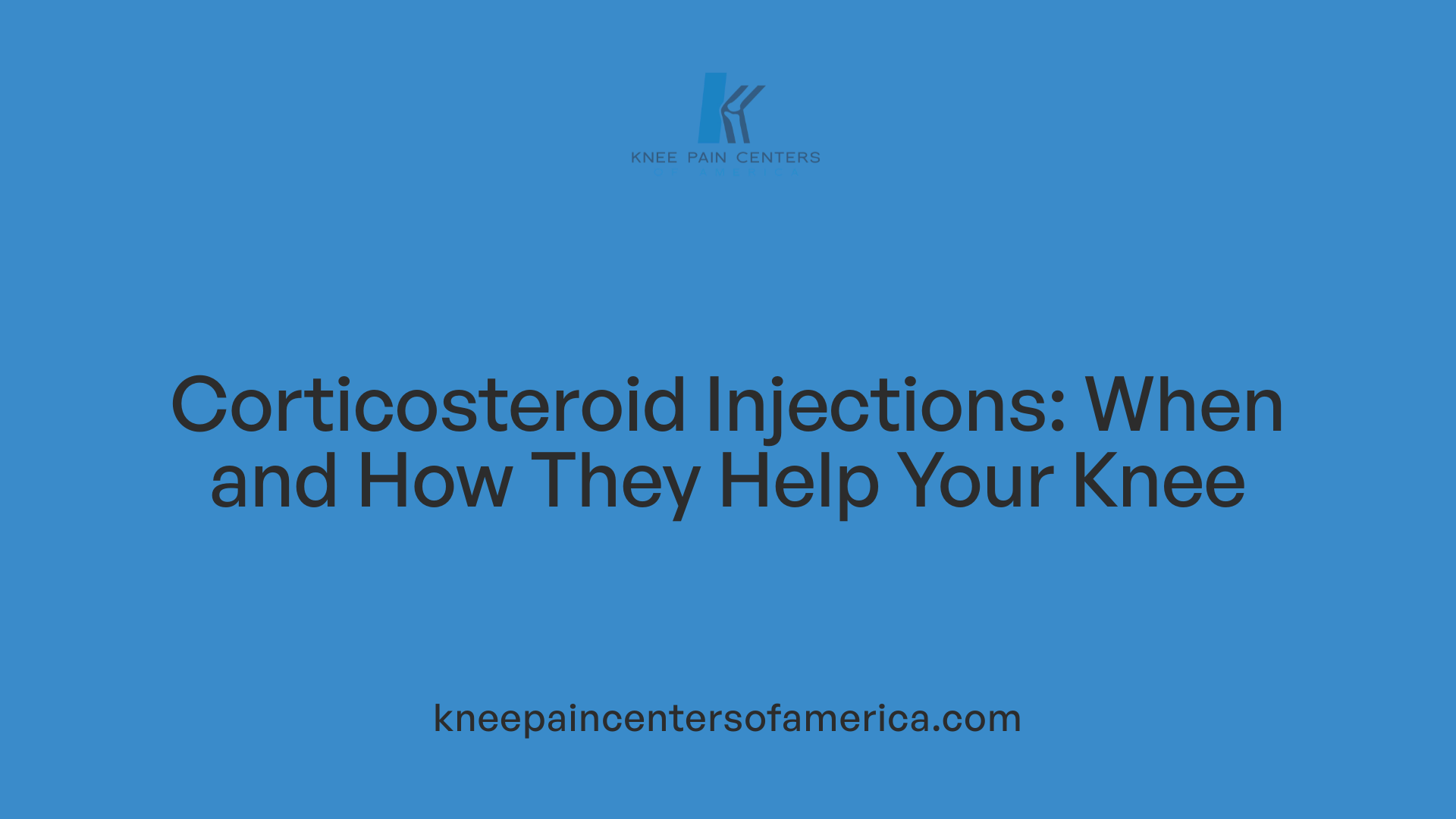
What role do corticosteroid injections play in managing knee osteoarthritis?
Corticosteroid injections are used to provide targeted relief from inflammation, pain, and stiffness in knee osteoarthritis by delivering anti-inflammatory medication directly into the joint. This localized approach can effectively reduce symptoms when oral medications or other treatments are insufficient.
How long does symptom relief from corticosteroid injections last?
The symptom relief from these injections is typically temporary, generally lasting from several weeks up to a few months. They help improve joint comfort and mobility during this period but do not halt the progression of cartilage damage characterizing osteoarthritis.
What are the safety considerations and limits on injection frequency?
Repeated corticosteroid injections can pose risks, including potential damage to the knee cartilage and soft tissues if administered too frequently. Medical guidelines recommend limiting these injections to no more than three times annually to balance symptom management with joint safety.
How are corticosteroid injections integrated into comprehensive knee osteoarthritis treatment?
Corticosteroid injections are part of a broader management plan that includes lifestyle modifications, physical therapy, weight loss, pain medications, and possibly surgical options. Their use is aimed at reducing acute flare-ups and providing temporary comfort, enabling patients to engage more effectively in rehabilitation and daily activities.
Surgical Interventions for Persistent Knee Pain and Osteoarthritis
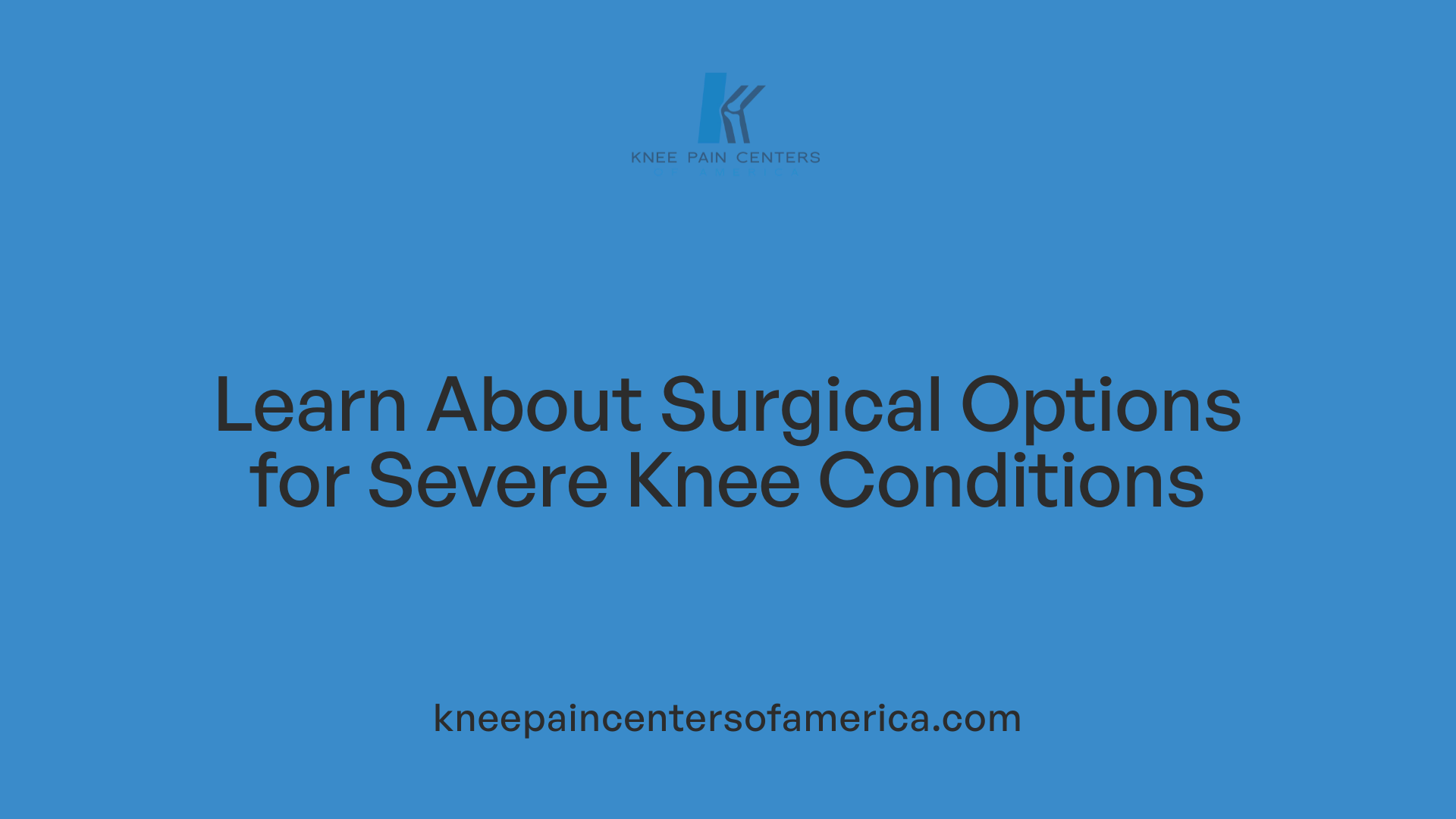
When is knee replacement surgery recommended for patients with osteoarthritis?
Knee replacement surgery is advised for patients suffering from severe osteoarthritis who do not respond to conservative treatments after 3 to 6 months. These patients typically experience significant pain and functional limitations that interfere with daily living. Imaging studies, like X-rays or MRIs, often reveal joint space narrowing, bone spurs, and other structural damage that justify surgical intervention.
Types of Surgical Procedures
- Arthroscopy: A minimally invasive procedure used primarily to address meniscal tears and remove loose cartilage fragments, but less effective for advanced osteoarthritis.
- Osteotomy: Surgery to realign the knee by cutting and reshaping bones, suitable for younger patients with uneven cartilage wear.
- Partial Knee Replacement: Replacement of only the damaged compartment of the knee, preserving healthy areas, often resulting in quicker recovery.
- Total Knee Replacement (Arthroplasty): Involves replacing the entire knee joint and is the most common procedure for severe osteoarthritis.
Recovery and Rehabilitation
Post-surgery recovery focuses on physical therapy to restore range of motion, strength, and function. Patients may require walking aids like crutches or canes initially. Rehabilitation plans usually include exercises to strengthen quadriceps, hamstrings, and hip stabilizers, and proper use of knee braces if necessary. Most patients experience considerable pain relief and improved mobility.
Risks and Prognosis
Surgical risks include infection, blood clots, prosthetic loosening or failure, and nerve damage. The prognosis is generally favorable, especially with an interprofessional approach involving surgeons, therapists, and other specialists. Older age, obesity, and severity of preoperative joint damage can influence outcomes. Overall, knee replacement surgery offers long-lasting relief, improving quality of life for patients with advanced knee osteoarthritis.
Emerging and Complementary Therapies for Knee Pain and Osteoarthritis
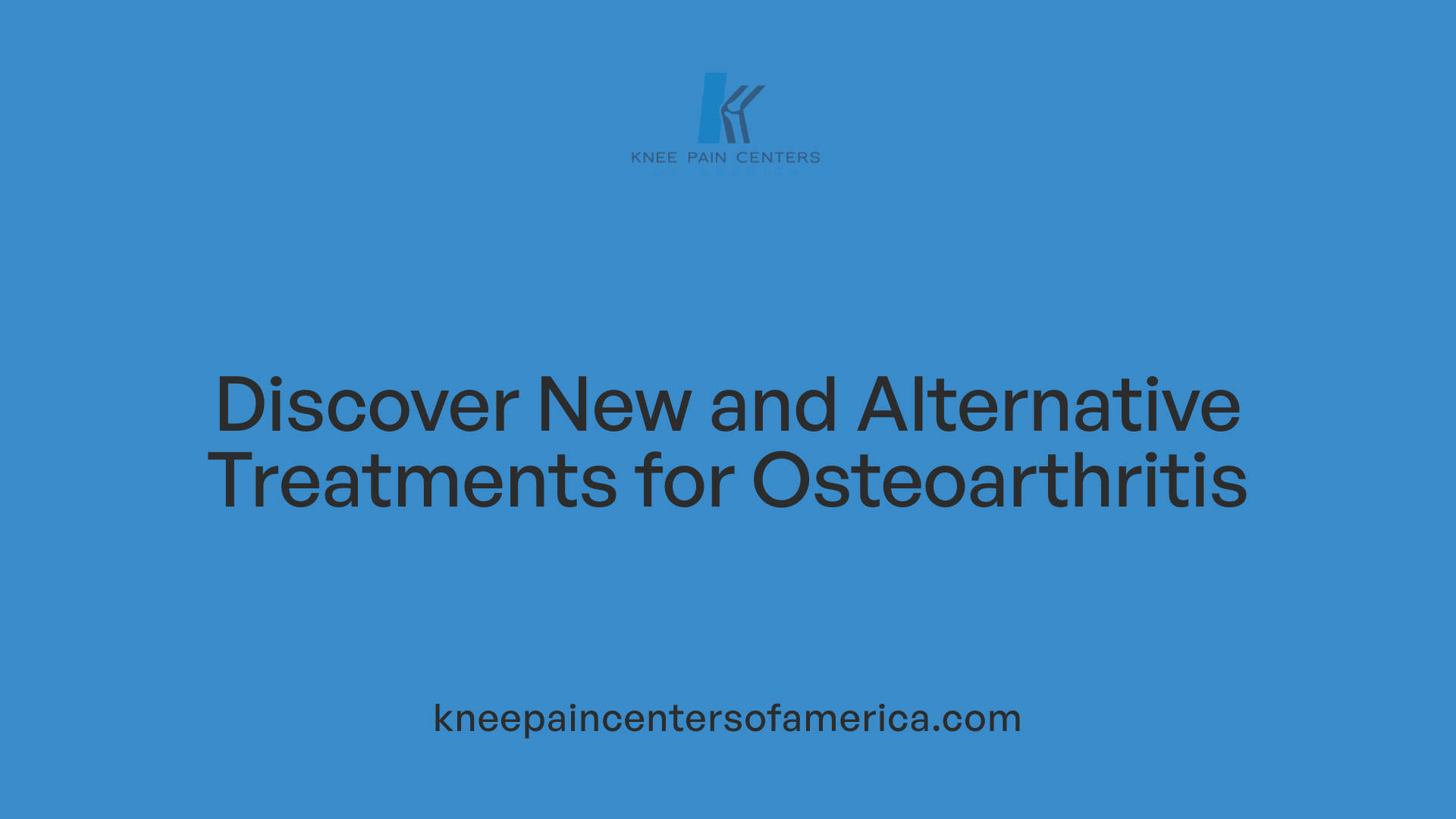
Are there any emerging medical treatments or therapies for knee pain and osteoarthritis?
Emerging therapies for knee pain and osteoarthritis aim to address symptoms and potentially improve joint health beyond traditional methods.
Biologic therapies such as platelet-rich plasma (PRP) and stem cell injections focus on harnessing the body's natural healing abilities. PRP involves concentrating a patient's own blood platelets and injecting them into the knee to reduce inflammation and encourage tissue repair. Stem cell injections attempt to regenerate damaged cartilage by introducing cells capable of differentiating into various joint tissues.
Genicular artery embolization (GAE) is a minimally invasive procedure that targets abnormal blood vessels contributing to chronic knee inflammation. By blocking these vessels, GAE can reduce swelling and pain. Similarly, nerve ablation techniques, including radiofrequency ablation of genicular nerves, aim to disrupt pain signals from the knee.
Alternative therapies such as acupuncture and pulsed electromagnetic field (PEMF) therapy provide non-pharmacologic options for symptom relief. Acupuncture may reduce pain through modulation of neurochemical pathways, while PEMF therapy uses electromagnetic fields to promote circulation and tissue healing.
While many patients report improvements with these treatments, current evidence remains preliminary. Large-scale, rigorous clinical trials are necessary to validate their long-term efficacy and safety. Future research is focused on optimizing protocols and integrating these approaches within comprehensive knee osteoarthritis management plans.
Managing Knee Pain on Stairs: A Path to Improved Mobility and Quality of Life
Knee pain experienced during stair climbing is often a signal of underlying joint issues, most commonly osteoarthritis, but also other conditions such as PFPS or ligament injuries. Understanding the causes and available treatments is critical to managing symptoms and maintaining mobility. Early diagnosis combined with a personalized, multidisciplinary approach that includes lifestyle changes, physical therapy, medications, injections, and possibly surgical interventions can provide substantial relief. Furthermore, advancements in emerging therapies offer hope for improved outcomes in the future. Individuals dealing with persistent knee pain on stairs should consult healthcare professionals to develop an appropriate treatment plan to restore function, reduce discomfort, and enhance their quality of life.
References
- Knee Arthritis
- Arthritis of the Knee - OrthoInfo - AAOS
- Knee Pain When Climbing Stairs? Causes & Solutions
- Knee Osteoarthritis: Symptoms, Stages, Causes & Treatment
- Knee Osteoarthritis - StatPearls
- How To Deal With Knee Pain While Walking Up Stairs
- Osteoarthritis of the Knee
- Knee Pain Causes, Conditions and Treatments - HSS
- Cortisone Shots (Steroid Injections): Benefits & Side Effects



